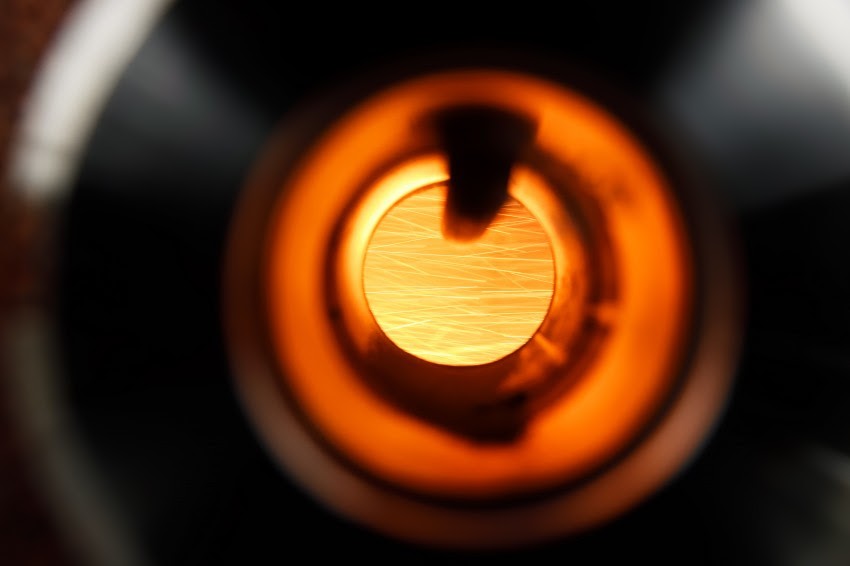Many industries use heat-intensive processes that generally require the burning of fossil fuels, but a surprising green fuel alternative is emerging in the form of metal powders. Ground very fine, cheap iron powder burns readily at high temperatures, releasing energy as it oxidises in a process that emits no carbon and produces easily collectable rust, or iron oxide, as its only emission.
If burning metal powder as fuel sounds strange, the next part of the process will be even more surprising. That rust can be regenerated straight back into iron powder with the application of electricity, and if you do this using solar, wind or other zero-carbon power generation systems, you end up with a totally carbon-free cycle. The iron acts as a kind of clean battery for combustion processes, charging up via one of a number of means including electrolysis, and discharging in flames and heat.
Recently, Swinkels Family Brewers in the Netherlands has become the first business in the world to put this process to work at an industrial scale. The company has been working with the Metal Power Consortium and researchers at TU Eindhoven to install a cyclical iron fuel system at its Brewery Bavaria that’s capable of providing all the heat necessary for some 15 million glasses of beer a year.
“We are enormously proud to be the first company to test this new fuel on an industrial scale in order to help accelerate the energy transition,” said Peer Swinkels, CEO of Royal Swinkels Family Brewers. “As a family business, we invest in a sustainable and circular economy because we think in terms of generations, not years. We combine this way of thinking with high-quality knowledge in the collaboration with the Metal Power Consortium. Through this innovative technology, we want to make our brewing process less dependent on fossil fuels. We will continue to invest in this innovation.”

Mees van den Ekart/TU Eindhoven
As a burnable clean energy storage medium, iron powder’s advantages include the fact that it’s cheap and abundant, the fact that it’s easy to transport and has a good energy density, its high burning temperature up to 1,800 °C (3,272 °F), and the fact that (unlike hydrogen, for example) it doesn’t need to be cryogenically cooled, or lose any energy during long periods of storage.
The round-trip energy cycle efficiency of this system is dependent on the processes used to put the energy into the iron in the regeneration process. High-efficiency electrolysis of iron oxide can store as much as 80 percent of your input energy in the iron fuel, according to this 2018 paper – a figure similar to what you get with modern hydrogen splitting.
There are bigger plans for this technology than just firing up individual industrial applications – or even just applications where the main output is heat. “While we’re proud of this huge milestone, we also look at the future,” says Chan Botter, who leads student team SOLID at TU Eindhoven, a group dedicated to the advancement of metal fuels. “There’s already a follow-up project which aims to realize a 1-MW system in which we also work on the technical improvement of the system. We’re also making plans for a 10-MW system that should be ready in 2024. Our ambition is to convert the first coal-fired power plants into sustainable iron fuel plants by 2030.”

Bart van Overbeeke/TU Eindhoven
Using this kind of cyclical process to generate electricity could approach a theoretical efficiency around 40 percent, again according to this 2018 paper. It might seem a little odd to generate renewable energy, then toss 60 percent of it out in the form of inefficient steam turbine generation processes, but this could end up being a flexible and cost-effective way to capture, distribute and even export renewable energy that’s generated at inconvenient times when there’s no demand for it to be fed directly into the grid.
Running iron powder through existing power generation infrastructure, which may simply need retro-fitting to deal with a different combustion process, would enable a very clean, yet load-responsive power grid that could operate on an easily-stored stash of raw material trucked in either from clean, renewable energy regeneration operations as described above, or from any number of industrial manufacturing operations.
Economics will eventually determine how far this idea gets, of course, and that remains in question at this early stage. But the idea certainly seems to have some advantages over hydrogen, pumped hydro, batteries or kinetic energy storage, depending on what you’re using it for, and it’s an interesting idea we’ll be keeping an eye on.
See a simple video about the process below.
Iron Powder – the green energy solution
Sources: TU Eindhoven, Swinkels Family Brewers
Source of Article